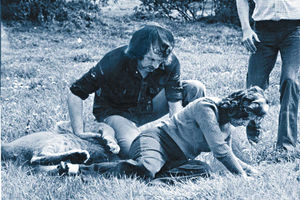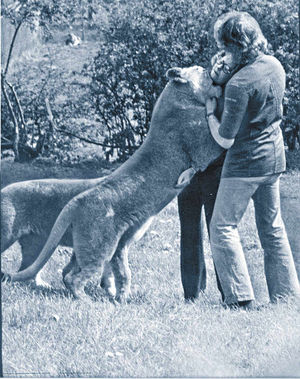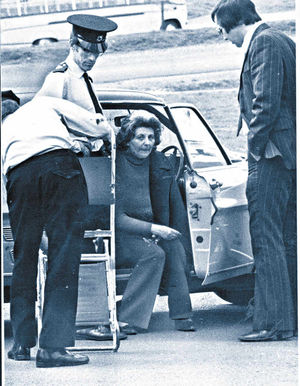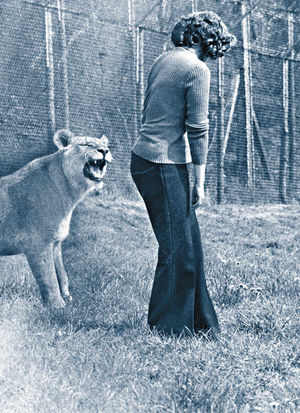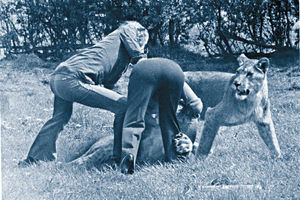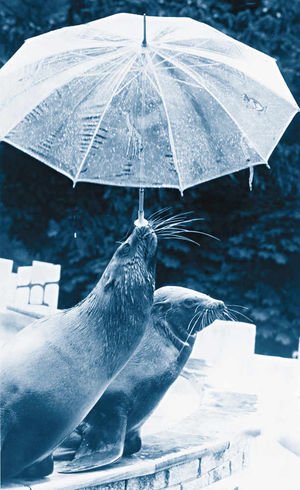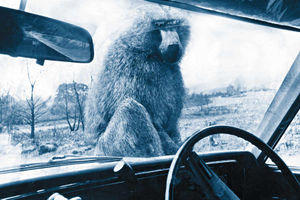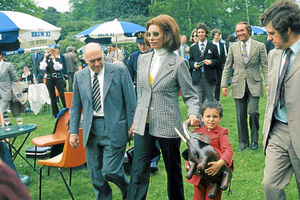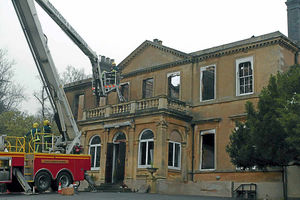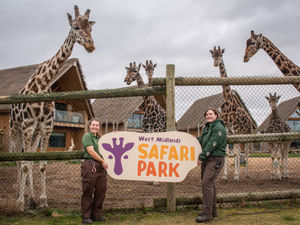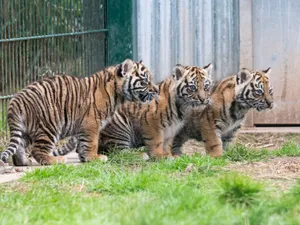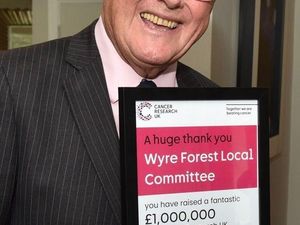40 years of history at West Midland Safari Park
From escaped baboons to film stars, Mark Andrews charts the 40-year history of West Midland Safari Park.
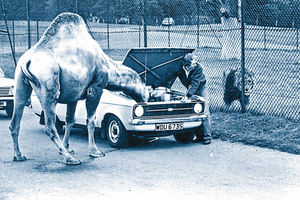
There were times when Bob Lawrence wondered what he had let himself in for.
Only months after starting work at the new West Midland Safari Park, the 23-year-old found himself facing the task of tracking down 130 baboons which had gone on the run after being liberated by a friendly antelope.
Then again, by that point he was grateful to still be in a job, after the 1973 fuel crisis threatened to shut the fledgling attraction almost as soon as it opened.
It is 40 years tomorrow since West Midland Safari Park, which was created in the grounds around Spring Grove country house in Bewdley, opened its gates to the public.
And Bob – there almost from the start – has had a fair few adventures over the years as he has seen the park emerge from a shaky start to become one of the leading tourist attractions in the country.
The official opening was actually performed a month after the attraction opened its doors to the public, when Hollywood screen siren Sophia Loren paid a visit with her film director husband Carlo Ponti, and four-year-old son Carlo Ponti Junior, or Cipi as he was known.
She was presented with a lion cub which had been named after her, and was taken on a special minibus tour of the 280-acre site, briefly stopping to feed a giraffe.
The park had been around two years in the planning, with work beginning in earnest during the summer of 1972.
Owner Hardwicke Companies Incorporated, which already had a game park in Montreal, invested a total of £500,000 in the project.
The company had bought Spring Grove House, a country pile built by industrialist Samuel Skey in 1790, which took its name from the springs bubbling up from the underlying sandstone.
The following months were spent building a network of roads and enclosures around Spring Grove's ample grounds.
Admission was £1 when the attraction opened, and the information given to customers was much more rudimentary during the first few years.
"In the early days, it was my job to hand out Johnny Morris cassettes to the customers as they came in," Bob said.
"The cassettes were a guide for people to listen to as they made their way around the site, and because not many cars had cassette players in those days, we handed out cassette players as well, and it was my job to try and collect them at the end – although most of them ended up being pinched!"
Keeping the baboons inside proved to be a problem from the start.
Within the first 10 days of the park opening, there were two escapes by the primates, who discovered a way to crawl under slow-moving cars as they left the enclosures.
A report in the Express & Star quoted resident John Birch, who voiced concerns after seeing men with rifles chasing around after a baboon was found in his garden.
The park's general manager assured neighbours that the fences were the best in the world, and said that steps had been taken to improve security at the site's gates. However, that was not to reckon with the work of an eland antelope, which managed to liberate the entire baboon stock the following year.
"I think he was rubbing his horns against the gate, and it fell open," Bob added.
"It was mad, they were all over the place, there were 130 of them.
"They were in the roads holding up the traffic, they were in people's gardens, they were everywhere.
"They came back with a lot of souvenirs – washing off people's lines and things like that,"?he said.
"They are very good at dismantling people's cars, but they are not so good at putting them back together again."
He said that while some people went out with guns trying to round the primates up, it ultimately came down to simply waiting for them to return.
"We put out some big bowls of fruit, and they all returned. Usually if you wait for it to get light, they will find their own way back," Bob said.
The sheer volume of visitors was also a problem in the early months, with huge queues of cars waiting to get in causing no little consternation among neighbours who had seen their peace shattered.
However, this was a problem which would very quickly disappear, when the park was hit by a much more serious blow during its first autumn.
"Six months after we opened, the Arab-Israeli War broke out, and fuel was in very short supply, and every drop was being conserved," he says.
"We were actually issued with petrol ration books – although we didn't ever have to use them – and visitor numbers fell to around six to eight cars a day.
"Everything was in freefall, and we were fearful for the future. We just hoped things would pick up, and, thankfully, the situation eased off after a bit and it was back to normal."
The sizzling summer of 1976 presented more problems. "It was a terrible time, people didn't want to sit in their cars with all the windows closed, so for a time we put the lions behind a fence," Bob added.
"That was there for a few years but after that, we went back to people driving among the lions, which was what we were meant to be in the first place." In 1978 a sea lion show was brought to Bewdley from the South of France, and for many years it was one of the most popular attractions during the summer months.
In the same year, the final stage of the Lombard RAC Rally was held around the grounds of the park, with the unforgettable sight of cars hurtling through the mud at high speeds around the animal reserves.
Other memorable moments in the park's history included a couple from Rowley Regis who asked for a wallaby to attend their wedding.
Eager to oblige, Wally the wallaby donned his best bib and tucker, and greeted the happy couple as they emerged from the church. A few months later, they emigrated to Australia.
While the drive-through monkey jungle was popular with children, the mischievous creatures proved too hot to handle.
In 1990 a monkey nicknamed The Artful Dodger escaped from his enclosure, and was at large for 17 days before being captured in Bridgnorth. A monkey hotline was set up for locals to report any sightings.
In 1993, 150 animals were added when Windsor Safari Park closed, and a regular shuttle service was set up to transport the animals, including lions and hippos, along the 116-mile route.
When the park opened, there were 447 animals recorded, and the choice was diverse if a little strange – a tortoise, a cockatoo, 14 fish tanks and a pony were all included in the inventory, along with a guard dog.
Today, there are more than 1,600 animals, with hippos, white lions and cheetahs among the big attractions. The park includes the UK's largest lemur exhibit, as well as the country's only drive-through wild dog and Indian rhino reserves.
"The focus is very much on conservation these days," said Bob, who is now 62.
The changing character of the park has been reflected in the attractions which have opened in the last few years, such as the African village with its meerkat area, and the penguin cove, which is designed to boost appeal during the winter months.
This year, to mark the 40th anniversary, the park opened its new Realm of Lions themed drive-through African lion adventure, and there are plenty of exciting plans for the future. A 250-room hotel, water park, railway halt and monorail link are all in the pipeline – and are due to be ready in time for when the park celebrates its 50th anniversary in 10 years' time.
Local business - Johnson Design Partnership, Bridgnorth
